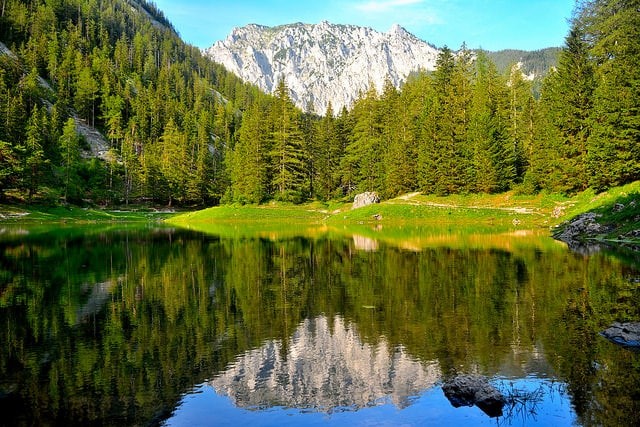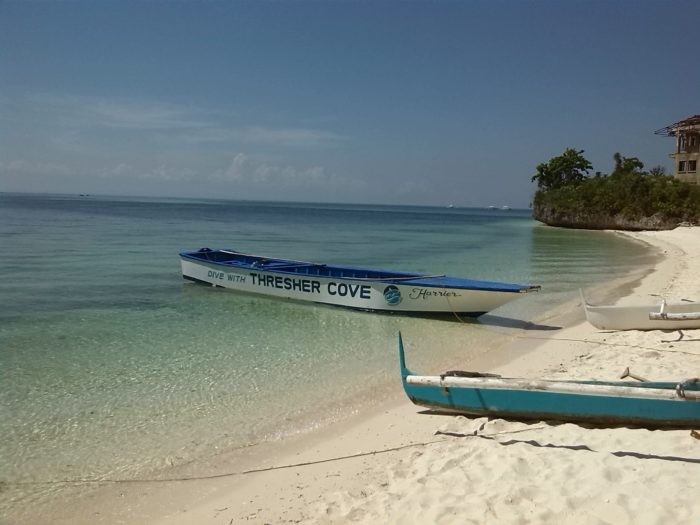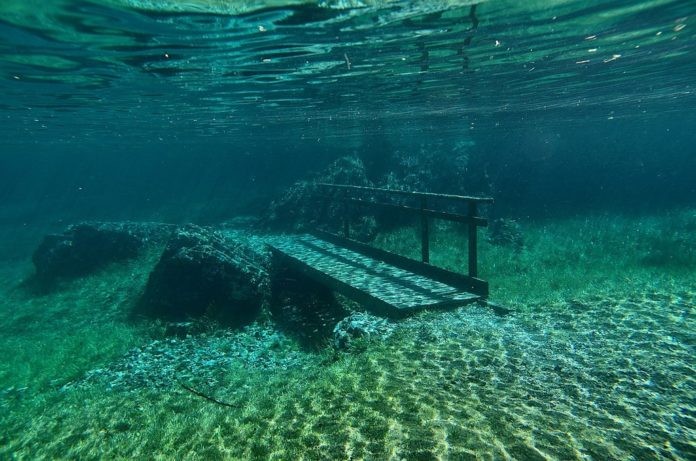Each dive site brings with it something that makes it different from every other dive site in the world. There are some dive sites that the difference really make them stand out from the others. Here are a couple that you may or may not have heard about, however, they deserve some special recognition as unique dive destinations.

Green Lake (Grüner See) Austria
The Green Lake at the village of Tragöß in the Styria district of Austria gets its name from the beautiful green color that the lake is from the spring to fall. It has often been credited as being the most beautiful lake in Central Europe. Sitting at an elevation of 776 meters, the lake and surrounding park and wild lands sit near the base of the 2,277 meters high Hochschwab peak. The snow capped Hochschwab mountains attracts visitors year round. In the winter, the one to two meter deep Grüner See just about freezes over. Trekkers and cross country skiers come to the area to enjoy the long kilometers of natural trails into the surrounding forest.
As the spring season arrives and the snow of the park starts to melt, the area comes alive. Grasses and flowers provide a range of colors and the lake unfreezes and become slightly deeper as the melted snow flows into the lake. The cross country ski tails are now better suited for hikers and people come to camp and enjoy the area. People will sit on park benches and feed the ducks that have returned to the swim in the snow feed lake, there is even a small bridge that spans a little stream.
As the season progresses, the water from the melting snow of the Hochschwab mountains reaches this small valley and the water level of the lake continues to rises. By June the lake has reached its maximum depth. No longer a mostly frozen one or two meter deep lake, it now sees 12 to 14 meters in depth. The water is cold being between 6°c and warms up to about 10°c. The cold water brings 50 to 100 meter visibility.
Divers braving the cold waters are the ones now enjoying the trails and sitting on the benches. The center portion of the lake is a gray stony bottom where the lake covers it year round. Where the land was not covered by the lake during the winter the grass is still green. Many of the flowers are still in bloom and the lake trout and other fish become active. In July the water starts to recede and by August it is only about 4 meters deep. The five month long dive season that brings divers from around Europe and the world to experience this unique dive will come to the end.
Sadly for the 2016 summer, the Tragöß-Grüner See tourism bureau has closed the lake for all activities including diving. They claim that scuba divers raise silt that causes damage to the grasses and threaten the green water color the lake is famous for. Divers have also been blamed for algae blooms within the lake. Local divers and nearby dive centers have been challenging the reasons for the closures and are proposing a permit system to control the number of divers. They hope that the lake will be reopened for the next dive season.
This lake certainly stands out from the rest but there are many similar lakes in the Alps both in Austria as well as Switzerland. Some of these are seasonal and others are dived year round. While these two countries are not generally noted for scuba diving, Switzerland has the highest percentage in the world of divers who dive weekly.
While not in the same awesomeness as Grüner See, the Grüblsee near Präbichl -Vordernberg Austria has an interesting dive site. Different statues have been placed in the lake for divers to explore. Diving conditions are similar to Green Lake being very cold, good visibility and a short dive season controlled by the mountain run offs.

Malapascua Island Philippines
Malapascua island just off the main island of Cebu was made famous for the wonders of Monad Shoal. A few minutes from the dive centers of the island, this shoal rises from the depth of over 200 meters to a flat top in 16 to 32 meters deep. Spread across the shoal are a number of cleaning stations each occupied by a team of cleaning fish. Daily from the deep, seldom seen thresher sharks visit the cleaning stations to have their needs attended to. The Thresher sharks that visit the shoal are the smallest of the Thresher Shark family, the Alopias pelagicus (Pelagic thresher), averaging only about 10 feet long. Half of that length is the tail which makes identifying this species of shark very easy.
While they are wide spread, Thresher sharks are not often found in waters shallow enough to be seen by scuba divers. Occasional sightings do happen, especially in the Red Sea and the Baja Coast. Still at Monad Shoal they appear daily.What makes this a unique dive destination? It is the only location in the world that it is known to happen. Most of the dive centers start out early to catch the early morning activities. There are generally five or six cleaning stations spread over the more than one square kilometer shoal. The local dive association have worked out an agreement where each dive center is assigned a time slot and a location for each day of diving. While the times closest to sunrise are the most desired, the truth is that the Thresher Sharks use the cleaning heavily for a number of hours each day.
Modal Shoal’s cleaning stations do not cater just to the Threshers. Seasonally, Manta and Devil Rays are frequent visitors as well. Hammerheads and other sharks appear as well.
While Malapascua island is closely tied in the mind of divers to the large sharks, there are many other features that give the island an excellent reputation. The island is small with only covering about 2.5 square kilometers. There are about a dozen outstanding dive sites located around the island and others within a hour or so. The lighthouse reef is one such example. Located just off shore near the island’s lighthouse, it is frequently done as a twilight dive. Mandarinfish are found here and as the sun sets the males display their colors and dance to attract females. The site is outstanding both at night and during the day as an macro photography site. The reefs are full of colorful fish, seahorses, squid and you may even see a deadly blue-ringed octopus. Near the reef is also the lighthouse wreck, this is a small WWII Japanese Landing craft.
A hour away from the island is the small Gato island. One of the dive centers has a saying “You come to Malapascua to see the thresher sharks, but you leave remembering Gato”. The names of the dive sites around the island can give you a sense of what the diving is about. White Tip Alley is the home of a large number of white tip sharks. Nudibranch City has a high density of nudibraches. The Cave is more accurately a tunnel or cavern that goes under the island and comes out on the other side. The reefs and rocks around the island create some spectacular underwater landscapes at the Cathedral are some of the best. Anywhere around the island you may encounter massive bait balls with sharks, squid or mackerels feeding on them.
A hour and a half from Malapascua is the remains of the Dona Marilyn. She was a Cebu-Manila passenger ferry about 90 meters long that sank during a typhoon on October 24, 1988. The sinking left 389 dead, with only 147 survivors. The wreck is on her side resting in 17 to 33 meters deep. Wreck certified divers will find that much of the ship is a easy dive.
The underwater world is unique with no two places the same. We may travel the word looking for different things and we may all have our own preferences still we all share the love of diving. We are always searching for our next unique dive destination.


